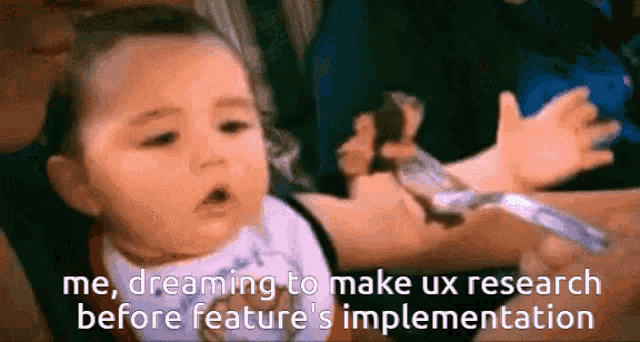

Anti-Personas in UX Design: Focusing on the Right Users
source link: https://uxplanet.org/anti-personas-in-ux-design-focusing-on-the-right-users-4f465751b18d
Go to the source link to view the article. You can view the picture content, updated content and better typesetting reading experience. If the link is broken, please click the button below to view the snapshot at that time.
Anti-Personas in UX Design: Focusing on the Right Users
User Experience (UX) design is a multidimensional process that involves understanding and catering to the needs of the target audience. While creating personas for your users is a common practice, considering who your product is not for is equally crucial. This brings us to the concept of “anti-personas” in UX design. 🎭
What are Anti-Personas?
Anti-personas are fictional representations of users who fall outside the intended target audience. These are individuals or groups whose needs, preferences, or behaviors are not aligned with the goals of the product or service being designed. 🚫👤

The Purpose of Anti-Personas:
1. Avoiding Misalignment:
By identifying and understanding anti-personas, design teams can prevent misalignment of features, functionalities, and user interfaces with the needs of the actual users.
2. Enhancing User Focus:
Knowing who the product is not for allows designers to concentrate on creating a user experience that resonates with the specific needs and goals of the intended audience. 🎯
Creating Anti-Personas:
1. Research:
Conduct thorough user research to identify potential anti-personas. This may involve surveys, interviews, and observations to understand different user segments and their characteristics.
2. Documentation:
Document anti-personas alongside regular personas in your design documentation. This ensures that the entire design team is aware of who the product is not targeting.
3. Decision Making:
Use anti-personas as a reference point during design discussions and decision-making processes. This helps the team stay focused on the primary user base and avoid unnecessary features that might cater to the wrong audience. 📊💡
Example: Crafting a Professional Video Editing Software with Anti-Personas
Imagine a design team embarking on the creation of a state-of-the-art video editing software explicitly targeted at professional videographers and filmmakers. The primary goal is to provide a robust suite of tools and features that cater to the complex and advanced needs of users in the film and media industry.
Target Personas:
1. Professional Video Editors: Individuals with extensive experience in video editing, requiring advanced features for tasks like color grading, multi-camera editing, and high-resolution output.
2. Film Directors: Users who oversee the entire video production process, needing seamless collaboration features, storyboard integration, and efficient project management tools.
Identifying Anti-Personas:
In this context, anti-personas could be individuals or user groups who do not align with the professional, high-end focus of the software. Let’s consider an anti-persona:Anti-Persona: Casual Users with Minimal Editing Skills
1. Characteristics:
Limited experience in video editing.
Primarily interested in basic edits, such as trimming and combining clips.
Prefers user-friendly, simplified interfaces.
2. Reasoning:
The software is not designed for beginners or hobbyists.
The goal is to avoid diluting the software’s capabilities by simplifying it for users who don’t need or appreciate advanced features. 🤔❌
Influencing Design Decisions:
Understanding the anti-persona helps guide several design decisions throughout the development process:
1. User Interface Complexity:
The interface can be designed with a focus on advanced functionalities and a professional aesthetic. There’s no need to clutter the interface with beginner-friendly features or excessive tooltips that might overwhelm the target audience.
2. Onboarding Process:
The onboarding process can skip basic tutorials and instead focus on showcasing advanced features. Resources can be allocated to creating in-depth guides and tutorials for professional workflows.
3. Feature Prioritization:
Feature development can prioritize tools like advanced color correction, multi-track editing, and support for high-resolution formats. Features that cater to basic editing needs may be excluded or de-prioritized.
4. Collaboration and Project Management:
Collaboration features can be tailored to meet the specific needs of film production teams. The software might integrate with industry-standard collaboration tools and support complex project structures. 🎬🛠️
Communication with the Design Team:
Documenting the anti-persona in design documentation is essential for ensuring a shared understanding among the design team. Regular reference to the anti-persona during discussions helps keep the team focused on the software’s intended audience.
Conclusion:
The concept of anti-personas enhances clarity and precision in UX design, guiding designers to acknowledge and understand who the product is not for. This deliberate consideration refines focus, leading to intentional design decisions that ultimately enhance the user experience for the intended audience. In our example of developing high-end professional video editing software, the anti-persona of casual users with minimal editing skills played a pivotal role in influencing choices related to user interface complexity, onboarding processes, feature prioritization, and collaboration tools. This strategic incorporation of anti-personas ensures that products not only meet user expectations but also align with the project’s goals. It emphasizes that successful design involves both inclusion and conscious exclusion, avoiding features that might dilute the user experience for the primary users. This dual approach, considering both who the product is for and who it is not for, contributes to a more targeted, efficient, and user-centered design, ultimately ensuring the project’s overall success. 🌐🚀
Recommend
About Joyk
Aggregate valuable and interesting links.
Joyk means Joy of geeK